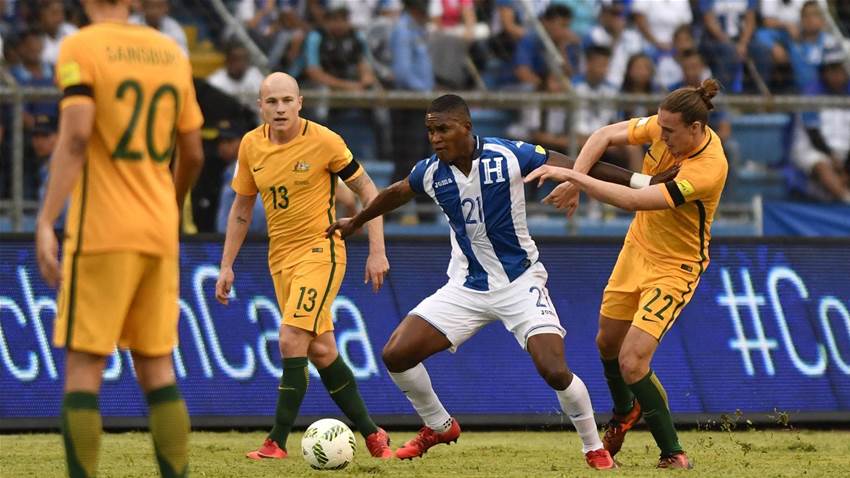A change in Ange Postecoglou’s system saw the Socceroos dominate a pacey Honduras side, coming away from the tricky away leg with a clean sheet, but no goals.
The diamond midfield
Whether the back three would be maintained or not was never really a question, but Ange Postecoglou has lately shown the tendency to adjust what happens in midfield from a game-to-game basis.
Even across the two legs of the Syria matches, there were identifiable changes in the approach, with the structure of the box midfield changing as well as the methods of final third penetration.

Jedinak, Luongo, Mooy and Irvine come together to form a midfield diamond.
Starting the match were the returning Mile Jedinak, Aaron Mooy, Massimo Luongo and Jackson Irvine (who would later be replaced by Tommy Rogic). The four players involved all appeared to have differing roles within the system, all of which we be explored below.
Mile Jedinak (holding midfielder)
The skipper was enormous in his first game back after a long injury layoff, and he anchored the midfield expertly throughout the match. He was a stable presence in central areas, rarely deviating and with a much lower range of movement than his midfield compatriots.
He performed key roles both with and without the ball, and was a key part in the build-up of many Australian attacks.
Defensively, Jedinak’s main function was to screen the back three and restrict Honduras’ access to their sole striker. In this regard he performed his duties well, as the times when Honduras were able to play through Anthony Lozano were few and far between.
He also won many of his aerial duels and won numerous second balls, minimising the effectiveness of Honduras’ transition football.
His positioning whilst his team was in possession was also integral to the Socceroo’s rest defence, ensuring that he was always in a position to prevent the effectiveness of an opposition counter attack.
As well as the defensive solidarity that he provided, Jedinak was also a key figure in the construction of Australia’s possession, consistently positioning himself behind the first line of pressure.

Jedinak’s movement between and behind the first line of pressure.
In doing so, Jedinak was able to offer a passing option that cut defenders out of the game and allowed him to receive the ball in space. From this position, he could either directly progress the play himself, or switch the point of attack to a different part of the pitch.
There were also occasions when Jedinak would move into the back three to take up the role of a centre-back, allowing for one of them to progress with the ball and create superiorities in midfield.
Overall, the skipper played an important role in both sides of Australia’s game, ensuring defensive stability throughout.
Related Articles

Champion A-League coach set to join Premier League giants

Under the gun: Spurs fans want Ange to be a loser in night of spite













